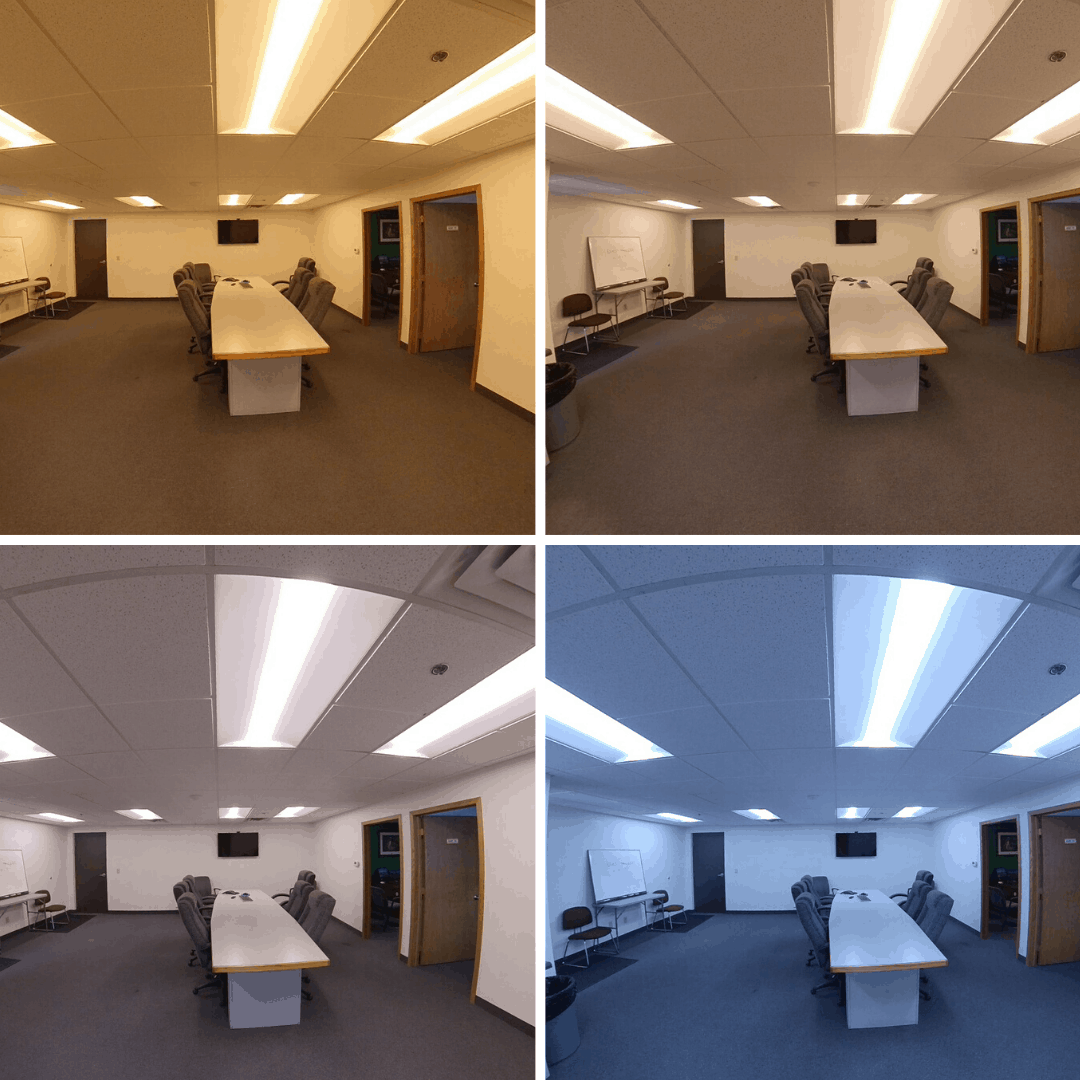How Lighting & Color Temperature Shape Your Productivity at the Desk
Share



Introduction
Have you ever found yourself yawning at your desk … even though you just sat down five minutes ago? Or maybe you’re squinting at your screen, adjusting your monitor, but everything still feels off? One of the hidden productivity killers could be… your lighting. That’s right: the color temperature and quality of your desk and overhead lighting can influence focus, alertness, mood—even how long you can stay comfortable doing deep work.
In this article we’ll dive into how lighting color temperature (measured in Kelvin) and other lighting factors impact your work performance, especially for US-based consumers working at home offices, hybrid setups, or modern workspaces. We’ll cover the science, practical recommendations, and actionable tips you can apply right away.
1. What is Color Temperature and Why It Matters
Color temperature refers to the warmness or coolness of a light source, measured in Kelvin (K). Lower values (~2700 K) emit a warmer, yellowish tone; higher values (~5000 K+) emit cooler, bluish-white light. BenQ+1
Why it matters:
-
Warmer tones tend to feel cozy, relaxing—great for winding down. The Spruce+1
-
Cooler tones tend to feel crisp, energizing, alerting—better for tasks requiring focus. Flexxica
-
For workspaces, the right balance can reduce eye-strain, fatigue, and keep you focused longer. Northwest Edison+1
In many studies, lighting isn’t just about brightness—but color tone and uniformity are equally key. MDPI
2. Research Highlights: Lighting Impacts Productivity
Here are some solid findings worth noting:
-
A study found high correlated color temperature (CCT) lighting improved well-being and productivity in corporate settings. PMC
-
Another recent investigation shows both illuminance (brightness) and CCT meaningfully affect comfort, mood, and productivity. For example: lighting around ~4200 K with ~500 lux produced strong results. MDPI
-
An article in Forbes emphasized that light affects performance, mental state, and emotional well-being—meaning it’s not just aesthetics, it's functional. Forbes
-
For home/desk work specifically: aiming for ~4000-5500 K is recommended to boost focus and alertness. BenQ
Bottom line: If your lighting is too warm (2700-3000 K) for prolonged focus tasks you may feel relaxed — but perhaps too relaxed. If it’s extremely cool (6500 K+) all day, you might feel “on” but suffer eye fatigue or discomfort with time.
3. Practical Guidelines for Your Desk & Workspace
Here are actionable suggestions tailored for someone working at a desk (like you!) — especially relevant to US-based setups.
Recommended color temperature zones:
-
For deep-focus tasks (coding, writing, spreadsheets): aim for ~4000-5000 K. Balanced, neutral-cool white.
-
For creative brainstorming, reading, relaxed tasks: go ~3500-4000 K (slightly warmer) to ease tension.
-
Avoid using ~2700-3000 K as the sole light for long work sessions (it may signal rest mode).
-
Avoid extreme >5500 K for prolonged sessions if you’re prone to eye strain.
Brightness & layout tips:
-
Ensure ambient lighting + task lighting (desk lamp) to reduce harsh contrast.
-
Task light should illuminate your work area without causing glare on screen.
-
Consider adjustable fixtures (both brightness & CCT) to shift for different times of day.
-
If using natural daylight, be aware that it changes color temperature (cooler mid-day, warmer late afternoon) and try to coordinate your artificial lighting accordingly.
Home office specific tweaks (US context):
-
In a typical US home office (with mixed lighting), try a desk lamp with “4000 K” setting and overhead light of ~4500 K for balance.
-
If you rely on daylight from windows, make sure your artificial lighting is not drastically warmer/cooler compared to daylight – mismatched tones cause fatigue.
-
For evenings, reduce CCT to ~3500 K or less to help your body wind down (but still keep enough brightness to avoid sluggishness).
4. Why It’s Worth the Effort
You might ask: “How big a deal is this lighting stuff, really?”
Here’s why:
-
Better lighting = extended comfortable focus, less frequent break-downs due to fatigue.
-
Improved mood and well-being lead to fewer distractions and higher quality work.
-
For remote workers or hybrid workers (very common in the US now), lighting becomes part of the professional toolkit—just like a good chair or monitor stand.
-
If you ever have guests/clients/home-office colleagues video-calling, good lighting projects professionalism and attention to detail (even subconsciously).
5. Quick Checklist Before You Upgrade
-
✅ Check what your current lighting is: note approximate CCT (many LED bulbs/fixtures list “4000 K”, “5000 K”).
-
✅ Match your lighting to the main task: is it intense focus, relaxed creative, or a meeting/reading environment?
-
✅ Try a desk lamp that allows CCT change (some models let you switch from warm to cool).
-
✅ Monitor your comfort over a week: any increased fatigue, eye strain, or mood dips? Adjust.
-
✅ Don’t ignore glare/shadows – sometimes brightness/placement is far more important than just color tone.
-
✅ Consider time of day: maybe use cooler tones during your high-productivity window, warmer later.
Summary
Lighting and color temperature matter more than you might think when it comes to productivity at your desk. Warm light helps you relax; cooler, neutral-white light helps you focus. Studies support that proper lighting (around 4000-5000 K, sufficient brightness) improves comfort, alertness, and work quality. By calibrating your desk and workspace lighting smartly, you can upgrade your productivity game—even if you’re working from home in the US.
Meta Description
“Discover how the color temperature of your desk and office lighting affects focus, mood, and productivity — practical tips for selecting 4000-5000 K lighting and setting up your workspace for peak performance.”
Tags
#officeLighting #colorTemperature #productivityHacks #homeOfficeSetup #deskErgonomics #workspaceDesign #lightingTips #remoteWorkBestPractices
